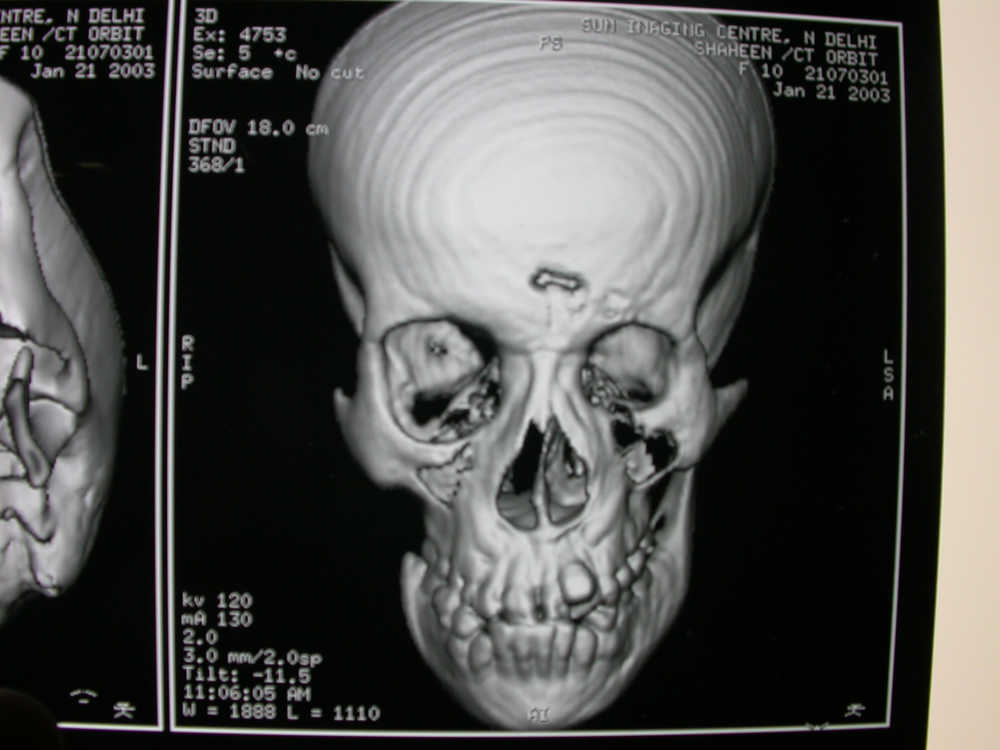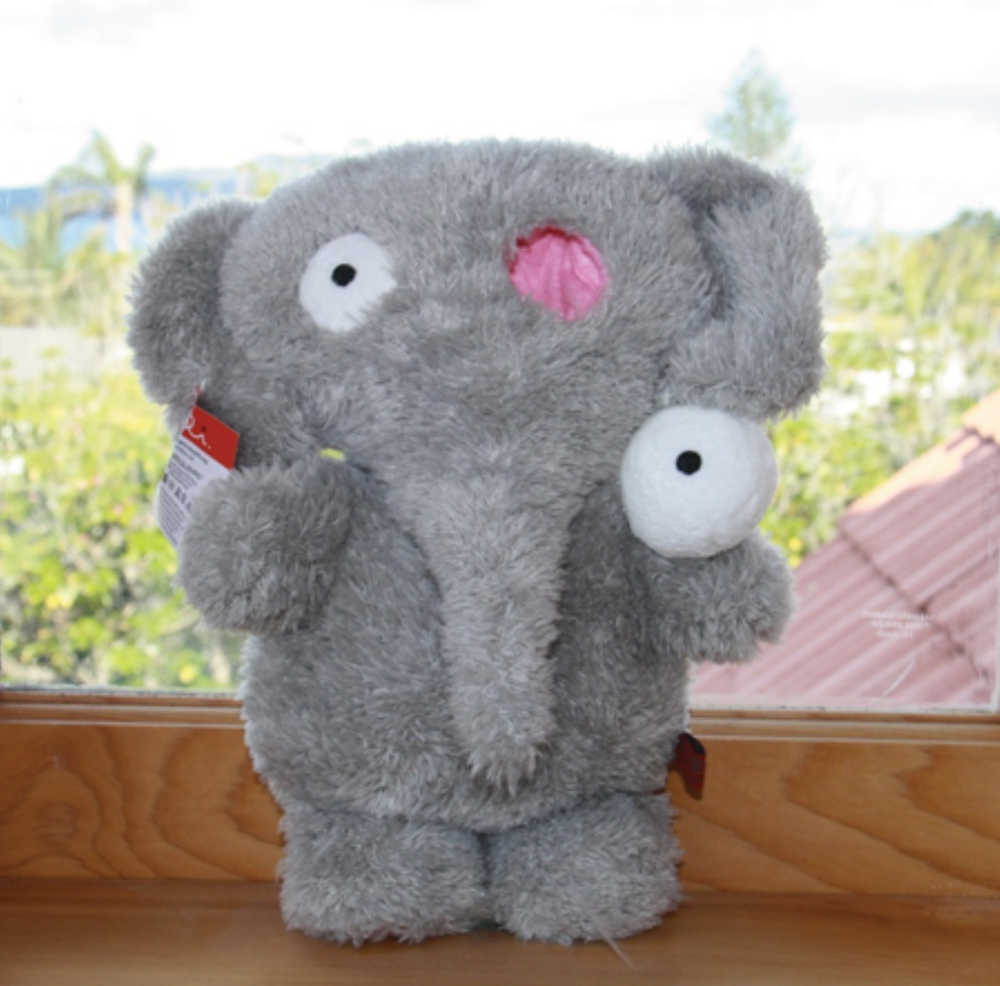
Fitting prosthetic eyes for children is a specialty of our practice. This baby is quite happy to drink his milk while having his new eye fitted.
Congenital eye loss
Babies born with undeveloped eyes (microphthalmia) or with cancer that results in eye loss (retinoblastoma) are rare. About 1 in 6,700 births for microphthalmia and 1 in 17,500 births for retinoblastoma.
Their early prosthetic treatment usually involves wearing a conformer shell that stimulates growth so that the affected side keeps pace with the contralateral side and facial symmetry is maintained. Babies grow incredibly quickly in the early months and the conformer shells are swapped out with progressively larger shells during the first year.

A series of custom made conformers used to stimulate socket growth from age one month to one year when the socket is ready for a more permanent prosthetic eye.


Fourteen year old girl with untreated unilateral anophthalmia. The tomogram of her skull shows how much smaller her left orbit is compared to her right orbit.
Early self awareness
When an eye is lost at an early age, parents often feel the loss more than the child. This is because self-awareness in children does not occur until about two years of age. This is when they begin to recognize that their movements are somehow connected to their reflections in a mirror. This novel experience is different from other things they see around them and further exploration ultimately leads them to become aware of themselves as separate entities capable of being projected in the minds of others. They recognize themselves in photographs as ‘me’ and at about three years of age they become self-conscious and aware of how special they are to only have one eye.
At about the age of five years a child’s self-awareness differentiates into three categories: their social self, their school work persona, and their physical self. Parents of anophthalmic children may strengthen a child’s self-image through reassurance, communication, support of hobbies, and finding good role models.
Parents’ behaviour
Parents should acknowledge their child is special but not dwell on their differences to the point where the child ends up feeling guilty for being the source of their parent’s anxiety.
Bullying
Probably the most enduring harm to the self-esteem of anophthalmic children is the impact of negative comments and hurtful teasing about the way they look from classmates or peers. Although these hurtful comments often stem from ignorance, they amount to bullying and parents and teachers should be alert for any suggestion of this happening, and be ready to stop it immediately.
Adolescents
Low self-esteem and a negative body image affects many adolescents when they begin puberty because of the numerous changes the body goes through. These changes come at a time when adolescents want to feel accepted by friends and they are often tempted to compare themselves with others. This can be a difficult time for anophthalmic teenagers and the support of family and friends is most important during this period.

Elli – a toy elephant created for retinoblastoma children.
